
by Ray Bodrey | Apr 26, 2017
Floods are a common concern in many areas of the U.S. Gulf coastal residents should be particularly aware. Floods may come in the form of flash floods, which come with little warning. Other flood conditions come on slower, as with large thunder storm fronts and tropical storms. With hurricane season not far away, it’s a good time to think about your property and the floodplains in your area.
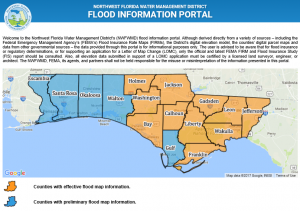
Figure: Flood Information Portal.
Photo: Courtesy of the Northwest Florida Water Management District.
Floodplains are broadly defined as land susceptible to flooding by any source. Areas designated as flood hazard areas are known also as “base flood” or “100-year-flood” zones. However, this can be confusing to some. A 100-year-floodplain does not mean that once your property floods, you’ll most likely not see it flood again for 100 years. The calculation actually means that there is a 1% chance that flooding will occur in any year. Floodplains are calculated by statistical estimates based on historical storm data.
Most mortgage lending agencies and banks, as well as real estate and insurance companies are well informed sources regarding floodplain information. Floodplain maps are updated periodically and are available for the public online and in print. FEMA’s National Flood Insurance Program has recently revised the digital flood insurance rate maps for many counties in Florida.
The Northwest Florida Water Management District (NWFWMD) offers a great tool for us in the Panhandle. The NWFWMD has created a map website, known as the “Flood Information Portal”. This site is dedicated in showing the extent of areas of flood risks. The site is also helpful in determining flood insurance rates and building requirements. The site is very user friendly with a search function, where one can search for floodplain information for a specific address. A detailed report can also be generated showing both the effective and preliminary flood map for the particular address selected. The map website can be found at http://portal.nwfwmdfloodmaps.com. For more information please contact your local county extension office and county, or city, planning department.
Before a flood strikes, find out if buying flood insurance is right for you. If you are in an areas prone to flooding already, consider modifying your home to combat any future flooding issue. If you believe your property is at risk, please be prepared. Keep in mind that flooding in an area can lead to street closures, power outages and temporary reduction in public services.
Supporting information for this article can be found in, “The Disaster Handbook” at the UF/IFAS web address: http://disaster.ifas.ufl.edu/
UF/IFAS Extension is An Equal Opportunity Institution.
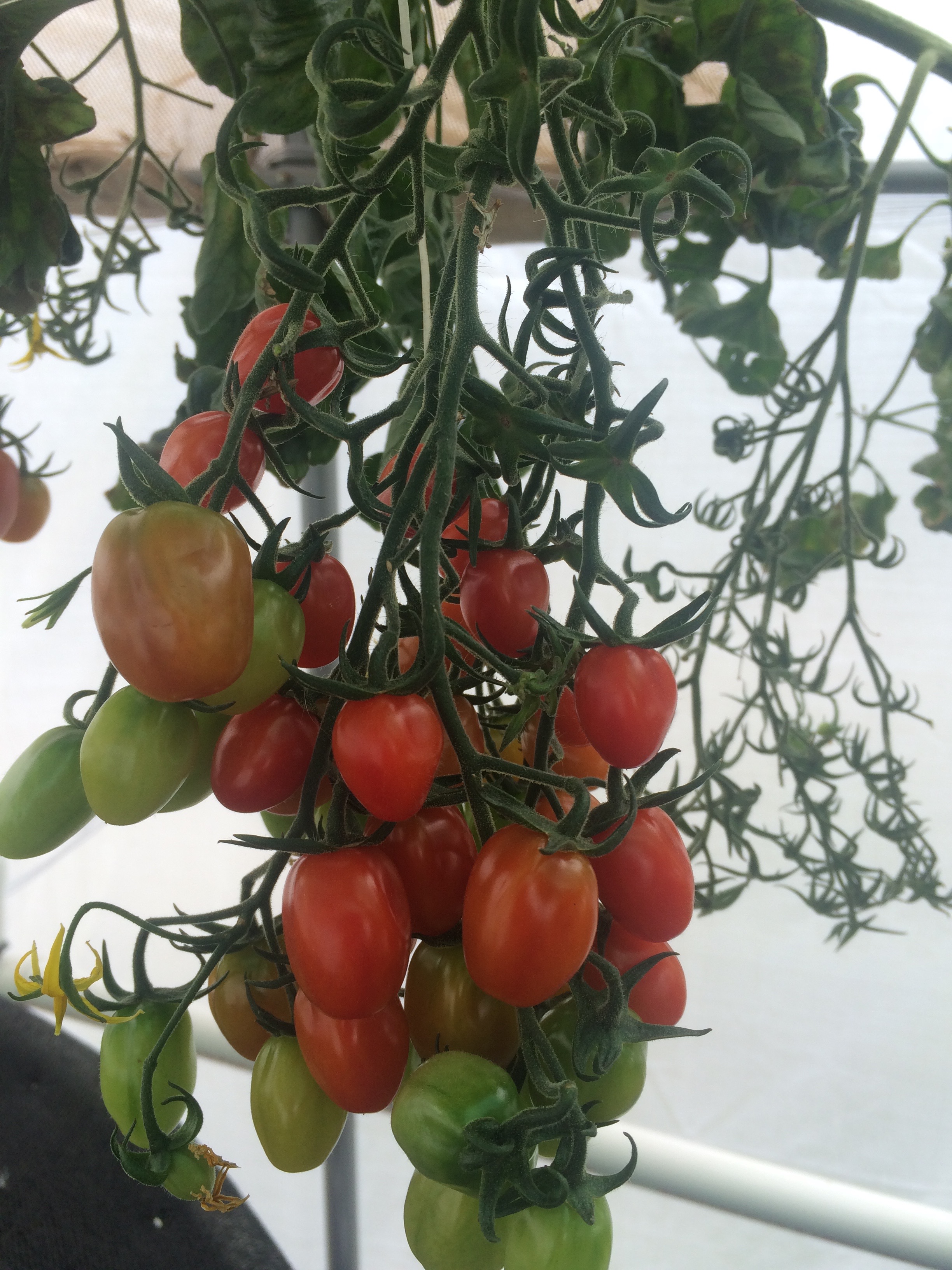
by Laura Tiu | Mar 11, 2017
There has been an increasing demand by clientele for information and training on small-scale food production methods to meet the growing demand for locally produced food and for personal consumption. One of the University of Florida Extension’s high-priority initiatives is “increasing the sustainability, profitability, and competitiveness of agricultural and horticultural enterprises.” One food production method currently being investigated is aquaponics.
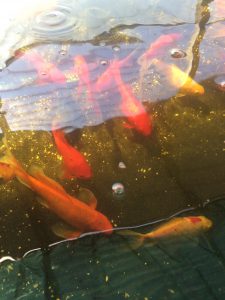
Koi are a popular fish species used in aquaponic systems.
Photo: Laura Tiu
Aquaponics is a technique for sustainable food production that utilizes the combination of aquaculture with hydroponics to grow fish and vegetables without soil. The process begins with fish producing waste, which is then pumped through a bio-filter to convert into fertilizer for the plants. Plants use nutrients from that water, and the freshly oxygenated water is returned to the fish tank. By recirculating the water from the fish tank to the grow bed, the need for water is greatly reduced compared to traditional irrigation. Additionally, producing crops aquaponically can reduce leaching, runoff, and water discharges to the environment by reusing nutrient effluent from aquaculture and hydroponic systems.
For new growers, being able to have access to training and to see a demonstration unit can eliminate many of the pitfalls typically encountered. A small aquaponics system, using local-sourced materials, is being constructed at the Walton County Extension office in DeFuniak Springs, FL. This system will demonstrate the technology and capability of small-scale aquaponics. The system is expected to be operational in April 2017. Working together, the Sea Grant, Horticulture, and Agriculture agents will be able to share construction and operation information with interested clients. Data will be collected from the system in order to give clientele real-world expectations of the operating costs and production potential from the system. Information will be shared in face-to-face interactions, at workshops, via webinar and in published articles. The goal is to see an increase in the number of aquaponics operations in the Panhandle of Florida contributing to an increase in availability of locally and sustainably produced food.
If you would like to see the system or learn more about aquaponics by subscribing to our Aquaponics list serve, please email Laura Tiu, lgtiu@ufl.edu.
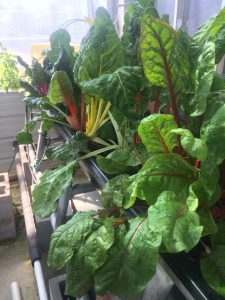
Greens tend to do very well in aquaponic systems.
Photo: Laura Tiu
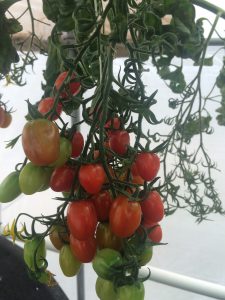
A panhandle favorite, tomatoes can be grown using aquaponics.
Photo: Laura Tiu
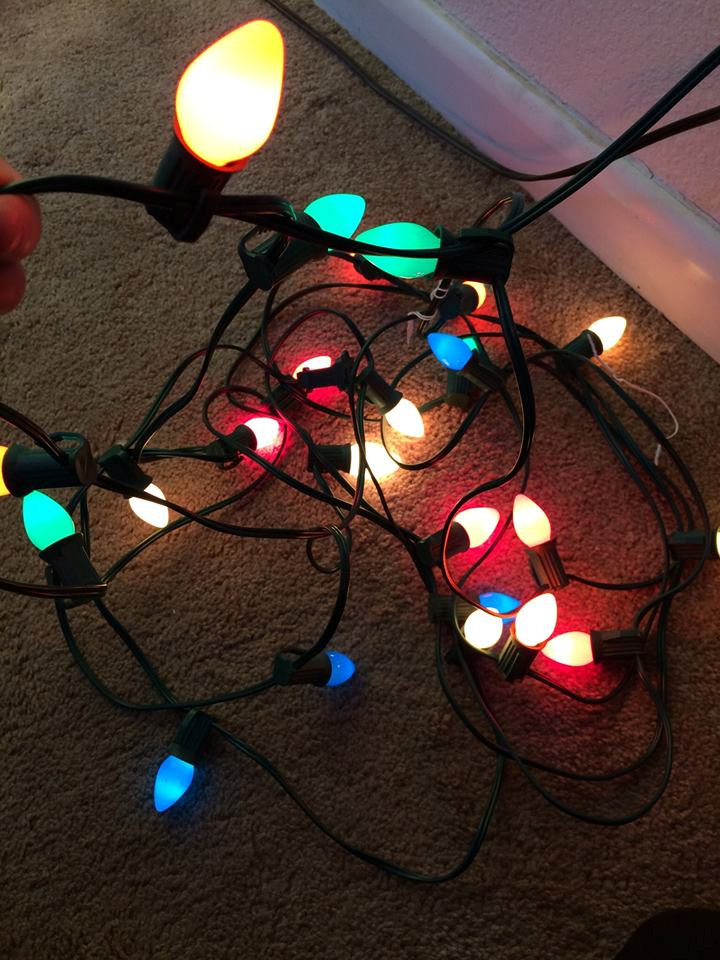
by Carrie Stevenson | Dec 5, 2016
I don’t know about you, but my kids have a lot of “stuff.” Legos on my son’s floor, stuffed animals surrounding my daughter’s room—it’s a lot to keep up with. Granted, they have never thrown away a Lego brick or stuffed animal, so they’re not contributing to the landfill (only my lack of sanity), and they have used these gifts for many years. When they outgrow them, we will donate their toys to another family or thrift shop. However, as a group, we Americans generate 25% more waste during the holidays (between Thanksgiving and New Year’s), the equivalent of about 1 million extra tons of garbage.

Music lessons are a gift that keeps on giving–and can result in a skill lasting a lifetime. Photo credit: Eric Stevenson
As I, and my children, have gotten older, it’s been more important to me to give the gift of experiences, or at least something that they can use for a long time. Tickets to a concert or sports event, music lessons, or a trip to someplace new will result in lifelong memories and skills without the packaging waste or clutter in the house.
Passing on an antique piece of jewelry or their grandfather’s tool set can be inexpensive for you but priceless for the recipient. Last year my kids’ great-aunt gifted them with honeybees for a family from Heifer International, and it was an amazing opportunity to discuss selfless giving and the needs of others. Many folks would love to receive a donation in their name to their favorite charity as a gift.
When it comes down to it, though, giving tangible gifts is often expected, wanted, or even needed. So how can we do this without contributing to 2017’s landfill? First, look at packaging. Many companies are trying to consciously reduce the amount of plastic, paper, and space used to ship and package their items. If you do get lots of extra packaging, be sure to recycle it. I’m a huge believer in reusable gift bags—I’ve been passing some back and forth to family members for years—and some gifts can be given in a useful container, such as a wooden bowl, a platter, or reusable cloth bags. Other gift ideas include clothing (I got a shirt last year made from recycled water bottles) and toys made from recycled materials. Plants, whether houseplants or a tree for the yard, make for long-lasting, beautiful gifts, and consumables like homemade food are meaningful and inexpensive.
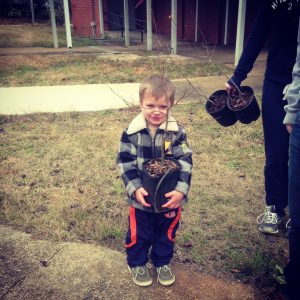
Consider giving plants as gifts–they are long-lasting and have many societal and environmental benefits. Photo credit: Carrie Stevenson
Finally, consider the companies producing the gifts you give. Forbes’ list of the 50 Most Sustainable Companies highlights corporations that are making a concerted effort to reduce energy and water use. This can make a big difference when you consider the worldwide reach and influence of companies like Adidas (#5) or Coca-Cola (#13).
We at UF IFAS Extension wish you all a wonderful, memorable, and safe holiday season. This time of year can be overwhelming, though, so if you need help managing stress, check out this publication from our Family, Youth, and Consumer Sciences department!
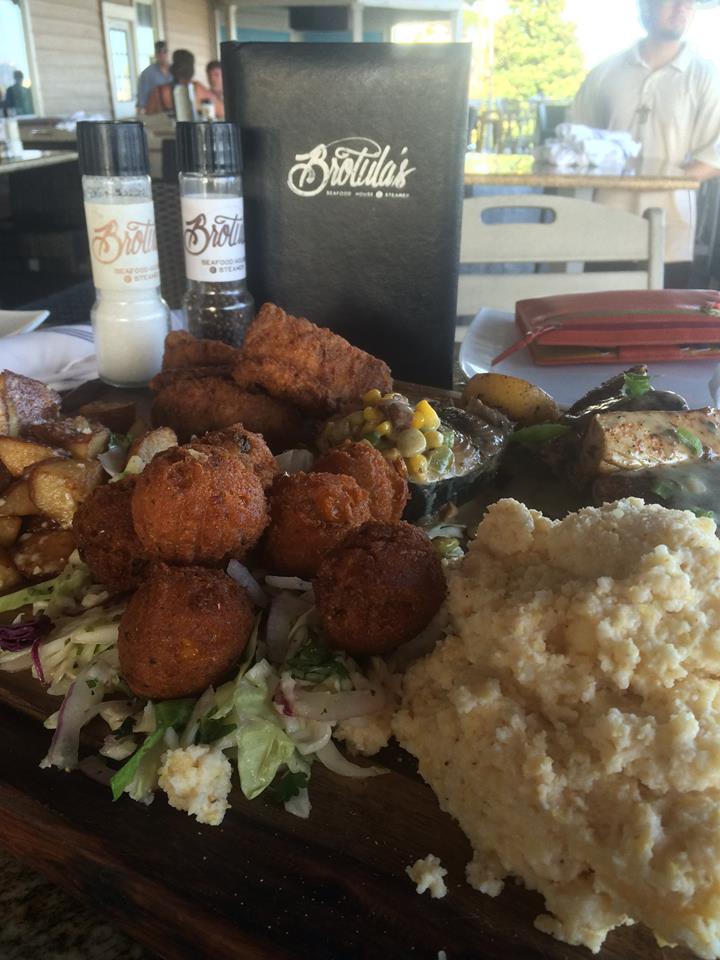
by Laura Tiu | Oct 7, 2016
I’ve spent the past 25 years studying and growing fish. When folks find out I’m a fish head, I often get a lot of questions about the safety and sustainability of many seafood products. It seems that the media and other groups have done a good job of scaring and confusing the American public to the point that some forgo consuming seafood altogether. That is such a shame because seafood is great for human health. Seafood is typically high protein, low in fat and calories and bursting with good for you stuff like omega-3s.
Seafood is either wild caught, aquacultured (farm-raised), or both. Both wild fisheries and aquaculture have their pros and cons. Overfishing, illegal fishing, bycatch, habitat degradation and lack of effective regulation have led to declines in wild fisheries. Aquaculture has been plagued with claims of pollution, disease and escapees. With all this negative press, what is the consumer to do?
You can choose your seafood based on its sustainability. Sustainable seafood has been caught or farmed in sustainable ways. And there are several groups today that make choosing these sustainable product easy. Once such group is the Monterrey Bay Aquarium. Their Seafood Watch program makes it easy for you to choose seafood that’s fished or farmed in ways that have less impact on the environment.
Using science-based criteria and input from fisheries and aquaculture experts, Seafood Watch has developed standards and guiding principles to develop consumer friendly guides. The guides are specific to each state and there is even one for sushi. These printable guides fit easily into your wallet so that you can use them anytime you purchase seafood. The guide shows with seafood items are “Best Choices” or “Good Alternatives,” and which ones you should “Avoid.” They also have an app for android and IPhone making it easier than ever to get the latest recommendations for seafood and sushi, learn more about the seafood you eat, and locate or share businesses that serve sustainable seafood.
As consumers, we have a lot of power in the seafood marketplace. With over 75% of the world’s fisheries either fully fished or overfished, we need to make smart choices about the seafood we buy and consume. By supporting fisheries and fish farms that are working hard to limit their impact on the environment we help protect the seafood we love. By using the seafood guide for your region, you’re making choices based on the best available information and supporting environmentally friendly fisheries and aquaculture operations.
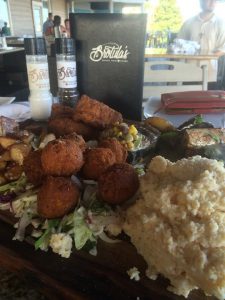
Brotula’s Restaurant in Destin, Florida will cook your fresh catch to perfection.
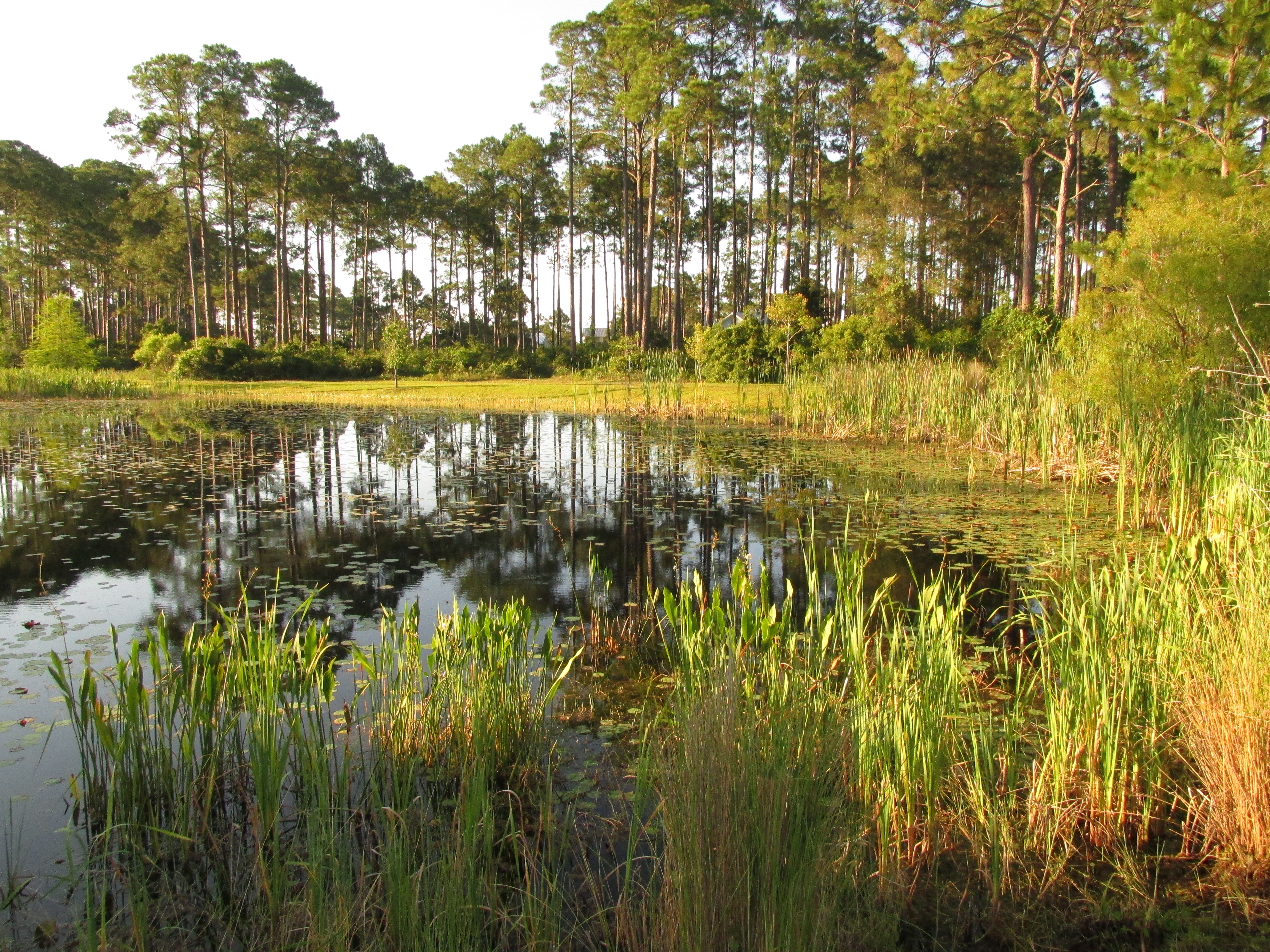
by Will Sheftall | Jul 22, 2016
Birds, migration, and climate change. Mix them all together and intuitively, we can imagine an ecological train wreck in the making. Many migratory bird species have seen their numbers plummet over the past half-century – due not to climate change, but to habitat loss in the places they frequent as part of their jet-setting life history.
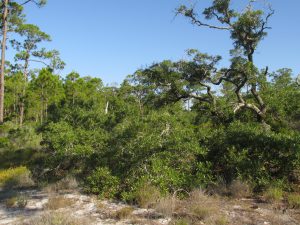
Migrating songbirds forage for insects in coastal scrub-shrub habitat. Photo credit: Erik Lovestrand, UF IFAS Extension
Now come climate simulation models forecasting more change to come. It will impact the strands of places migrants use as critical habitat. Critical because severe alteration of even one place in a strand can doom a migratory species to failure at completing its life cycle. So what aspect of climate change is now threatening these places, on top of habitat alteration by humans?
It’s the change in weather patterns and sea level that we’re already beginning to see, as the impacts of global warming on Earth’s ocean-atmosphere linkage shift our planetary climate system into higher gear.
For migratory birds, the journey itself is the most perilous link in the life history chain. A migratory songbird is up to 15 times more likely to die in migration than on its wintering or breeding grounds. Headwinds and storms can deplete its energy reserves. Stopover sites for resting and feeding are critical. And here’s where the Big Bend region of Florida figures prominently in the life history of many migratory birds.
According to a study published in March of this year (Lester et al., 2016), field research on St. George Island documented 57 transient species foraging there as they were migrating through in the spring. That number compares favorably with the number of species known to use similar habitat at stopover sites in Mississippi (East Ship Island, Horn Island) as well as other central and western Gulf Coast sites in Alabama, Louisiana, and Texas.
We now can point to published empirical evidence that the eastern Gulf Coast migratory route is used by as many species as other Gulf routes to our west. This confirmation makes conservation of our Big Bend stopover habitat all the more relevant.
The authors of the study observed 711 birds using high-canopy forest and scrub/shrub habitat on St. George Island. Birds were seeking energy replenishment from protein-rich insects, which were reported to be more abundant in those habitats than on primary dunes, or in freshwater marshes and meadows.
So now we know that specific places on our barrier islands that still harbor forests and scrub/shrub habitat are crucial. On privately-owned island property, prime foraging habitat may have been reduced to low-elevation mixed forest that is often too low and wet to be turned into dense clusters of beach houses.
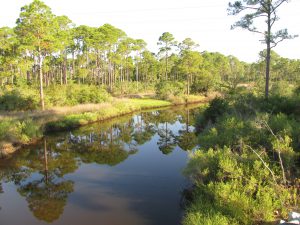
Coastal slash pine forest is vulnerable to sea level rise. Photo credit: Erik Lovestrand, UF IFAS Extension
Think tall slash pines and mid-story oaks slightly ‘upslope’ of marsh and transitional meadow, but ‘downslope’ of the dune scrub that is often cleared for development.
“OK, I get it,” you say. “It’s as if restaurant seating has been reduced and the kitchen staff laid off. Somebody’s not going to get served.” Destruction of forested habitat on our Gulf Coast islands has significantly reduced the amount of critical stopover habitat for birds weary from flying up to 620 miles across the Gulf of Mexico since their last bite to eat.
But why the concern with climate change on top of this familiar story of coastal habitat lost to development? After all, we have conservation lands with natural habitat on St. Vincent, Little St. George, the east end of St. George, and parts of Dog Island and Alligator Point. Shouldn’t these islands be able to withstand the impacts of stronger and/or more frequent coastal storms, and higher seas – and their forested habitat still serve the stopover needs of migratory birds?
Let’s revisit the “low and wet” part of the equation. Coastal forested habitat that’s low and wet – either protected by conservation or too wet to be developed – is in the bull’s eye of sea level rise (SLR), and sooner rather than later.
Using what Lester et al. chose as a reasonably probable scenario within the range of SLR projections for this century – 32 inches, these low-elevation forests and associated freshwater marshes would shrink in extent by 45% before 2100. It could be less; it could be more. Conditions projected for a future date are usually expressed as probable ranges. Experience has proven them too conservative in some cases.
The year 2100 seems far away…but that’s when our kids or grandkids can hope to be enjoying retirement at the beach house we left them. Hmm.
Scientists CAN project with certainty that by the time SLR reaches two meters (six and a half feet) – in whatever future year that occurs, 98% of “low and wet” forested habitat will have transitioned to marsh, and then eroded to tidal flat.
But before we spool out the coming years to a future reality of SLR that has radically changed the coastline we knew, let’s consider where the crucial forested habitat might remain on the barrier islands of the next generation’s retirement years:
It could remain in the higher-elevation yard of your beach house, perhaps, if you saved what remnant of native habitat you could when building it. Or if you landscaped with native trees and shrubs, to restore a patch of natural habitat in your beach house yard.
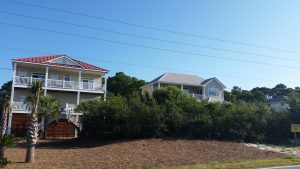
Migratory songbird stopover habitat saved during beach house construction. Photo credit: Erik Lovestrand, UF IFAS Extension
We’ve all thought that doing these things must be important, but only now is it becoming clear just how important. Who would have thought, “My beach house yard: the island’s last foraging refuge for migratory songbirds!” even in our most apocalyptic imagination?
But what about coastal mainland habitat?
The authors of the March 2016 St. George Island study conclude that, “…adjacent inland forested habitats must be protected from development to increase the probability that forested stopover habitat will be available for migrants despite SLR.” Jim Cox with Tall Timbers Research Station says that, “birds stop at the first point of land they find under unfavorable weather conditions, but also continue to migrate inland when conditions are favorable.”
Migratory birds are fortunate that the St. Marks Refuge protects inland forested habitat just beyond coastal marshland. A longer flight will take them to the leading edge of salty tidal reach. There the beautifully sinuous forest edge lies up against the marsh. This edge – this trailing edge of inland forest – will succumb to tomorrow’s rising seas, however.

Sea level rise will convert coastal slash pine forest to salt marsh. Photo credit: Erik Lovestrand, UF IFAS Extension
As the salt boundary moves relentlessly inland, it will run through the Refuge’s coastal buffer of public lands, and eventually knock on the surveyor’s boundary with private lands. All the while adding flight miles to the migration journey.
In today’s climate, migrants exhausted from bucking adverse weather conditions over the Gulf may not have enough energy to fly farther inland in search of forested foraging habitat. Will tomorrow’s climate make adverse Gulf weather more prevalent, and migration more arduous?
Spring migration weather over the Gulf can be expected to change as ocean waters warm and more water vapor is held in a warmer atmosphere. But HOW it will change is difficult to model. Any specific, predictable change to the variability of weather patterns during spring migration is therefore much less certain than SLR.
What will await exhausted and hungry migrants in future decades? Our community decisions about land use should consider this question. Likewise, our personal decisions about private land management – including beach house landscaping. And it’s not too early to begin.
Erik Lovestrand, Sea Grant Agent and County Extension Director in Franklin County, co-authored this article.

by Carrie Stevenson | Apr 8, 2016
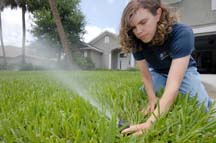
Extension agent Janet Bargar checks the water flow and direction of a pop-up irrigation system at a home. (AP photo/University of Florida/Josh Wickham)
Early spring is a great time of year to reevaluate your lawn and landscape water needs. University of Florida studies have shown that in homes utilizing automatic sprinkler systems, 50% of total home water consumption in the summer comes from running a sprinkler system. When a homeowner is using utility water, they are typically charged twice; first for bringing the water in and second for wastewater fees. Estimated costs for irrigating a 5,000 square foot yard range from $5-$25 per irrigation session. So how does one cut down?
To start with, check your sprinkler system for efficiency. Turn on the water, stand back, and watch it run. Look for broken or clogged heads (evident by uneven and high-volume spray), or leaks within the water line. Clean out the heads or replace these broken parts—most are very inexpensive and found in the plumbing section of home improvement stores. Look at the reach of the spray, and make sure irrigation water is not landing wastefully on roads, sidewalks, or adjacent houses. To paraphrase a wise colleague, “No matter how much you water it, concrete won’t grow.”
Many of our clientele ask how long an irrigation system should be run and how much water plants should get. Ideally, turf and landscape plants should get ½” to ¾” of water per application. The frequency of application varies by plant needs, weather, and soil type. For very sandy soils, some specialists have recommended applying less water at a slightly more frequent rate, since sandy soils are unable to hold water in the root zone of plants for long. Mulching around plants and amending soils with organic material can help improve a soil’s water-holding capacity.

An efficient irrigation system should direct water to the root system of a landscape and reduce overspray onto homes and sidewalks. Photo credit: UF IFAS
A simple sprinkler calibration can be conducted by spreading empty aluminum cans around one’s yard, and turning on each sprinkler zone. Run each zone for 30 minutes and measure how deep the water is in the cans. If the water depth is within the recommended amounts, no changes are needed. However if it’s not deep enough or greater than ¾” of an inch, run times should be adjusted accordingly. If some of the cans receive a noticeably different amount of water than those adjacent to them, it is a signal that the reach of the spray heads is not adequately set and should be corrected to make sure the entire landscape has even coverage.
The primary goal of supplemental irrigation is for the plants’ root zones to be wet, but not saturated or too dry. Ideally, established lawns and landscapes should thrive on rainfall after initial establishment, and only take irrigation in longer periods of drought. However, this is contingent on the planting of Florida-friendly vegetation and a homeowner with a keen eye to the condition of one’s plants, who is willing to turn the sprinkler system to “manual” and wait for his or her plants to start drooping before turning on the water. In reality, most homeowners find it difficult to take this much time and care with their irrigation system, and opt for the “water every two or three days whether needed or not” approach, even in parts of the state with water restrictions. In fact, anecdotal evidence seems to show that homeowners only allowed to water lawns one or two days a week will overdo it just to make sure their plants survive.
Luckily, new technology exists that can take the guesswork out of irrigation for a homeowner, while keeping plants alive and conserving water at the same time. “Smart” irrigation systems include soil moisture sensors and evapotranspiration (ET) controllers. Soil moisture sensors (SMS) use electrodes buried within the root zone of turf, which are calibrated to a certain level of moisture in the soil. The system is only allowed to run when water levels drop below a preset threshold. ET (evapotranspiration) controllers monitor weather conditions on site or from a nearby weather station, using satellite signals to determine when plants will need additional water.



















